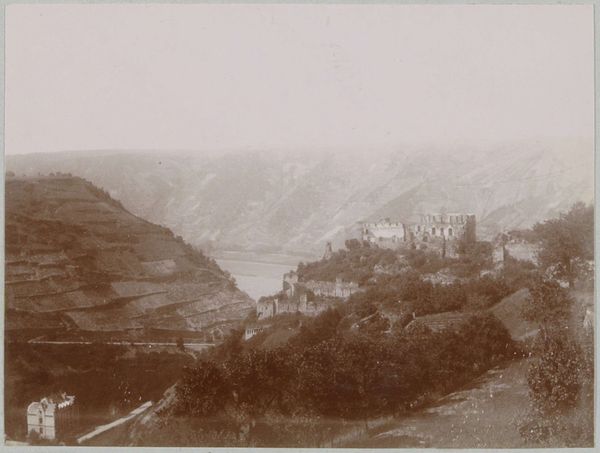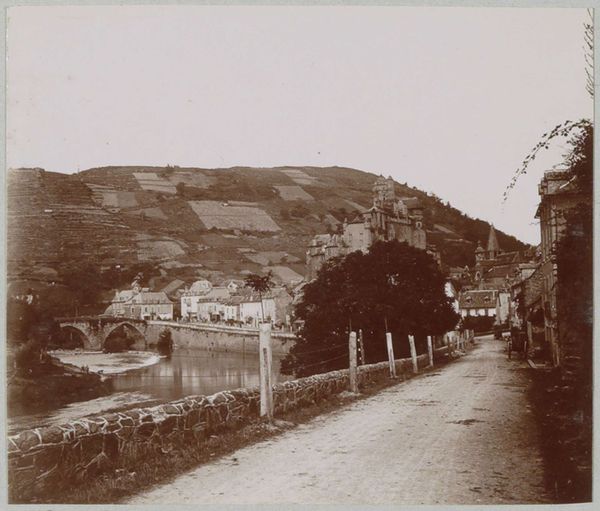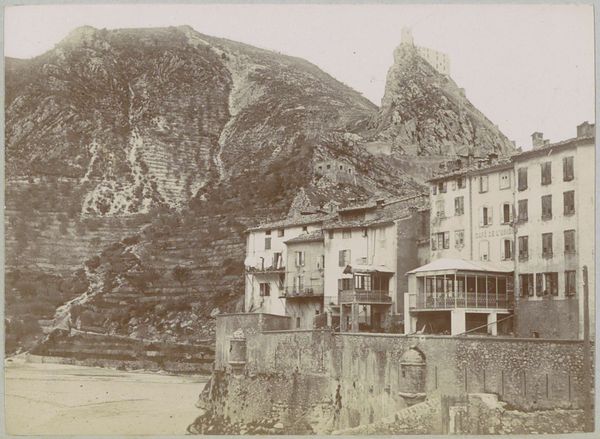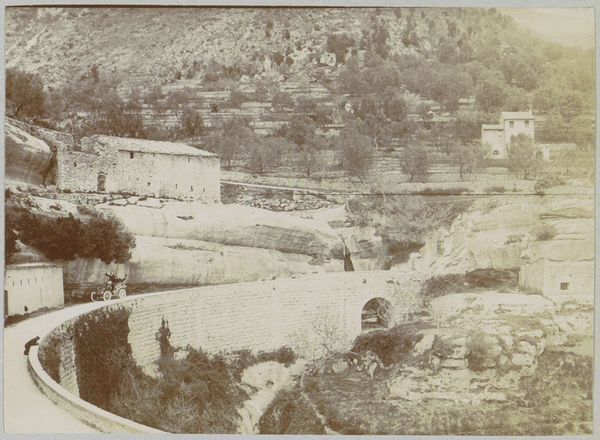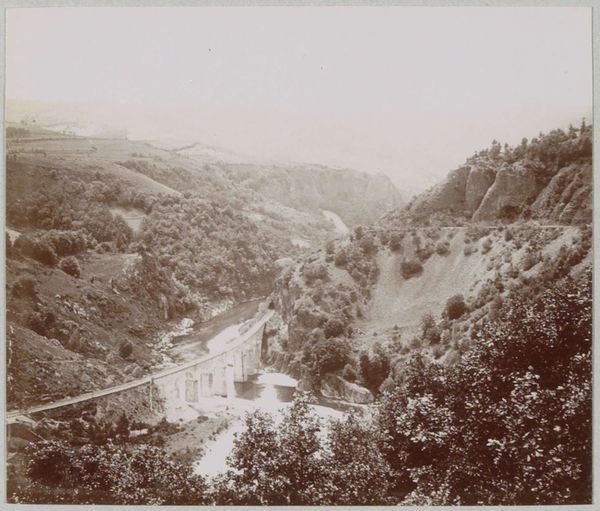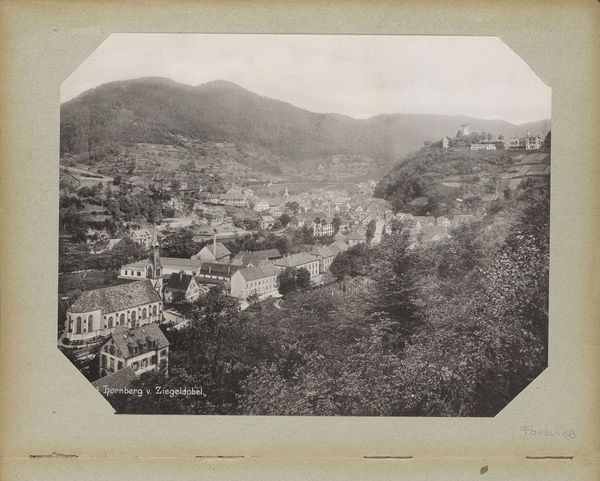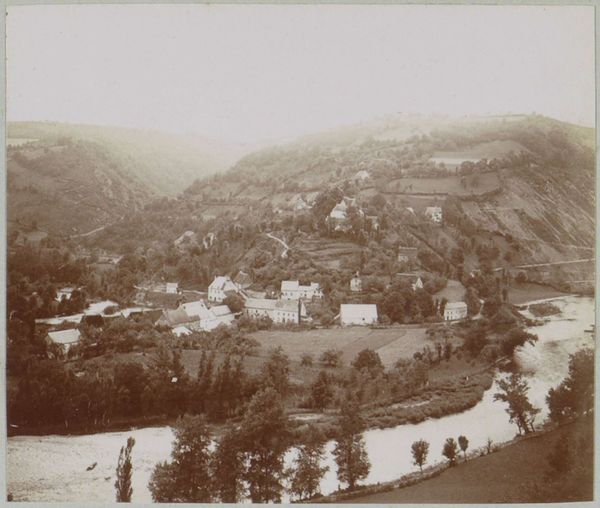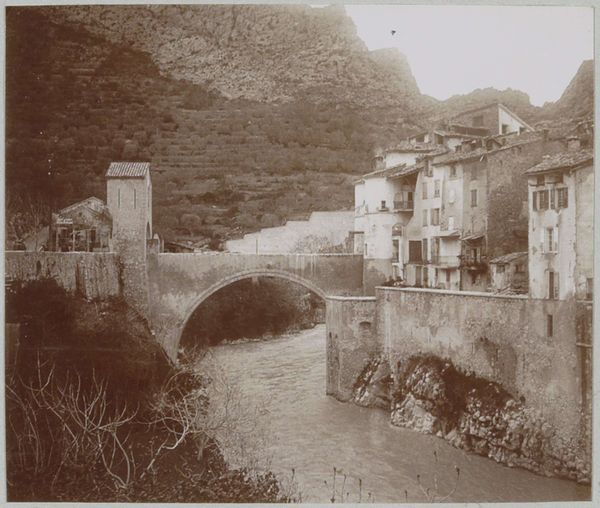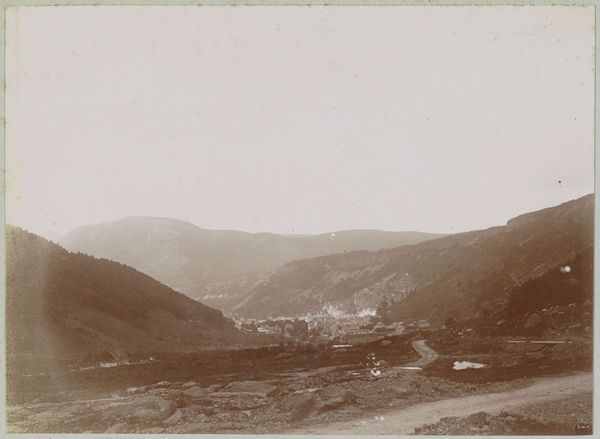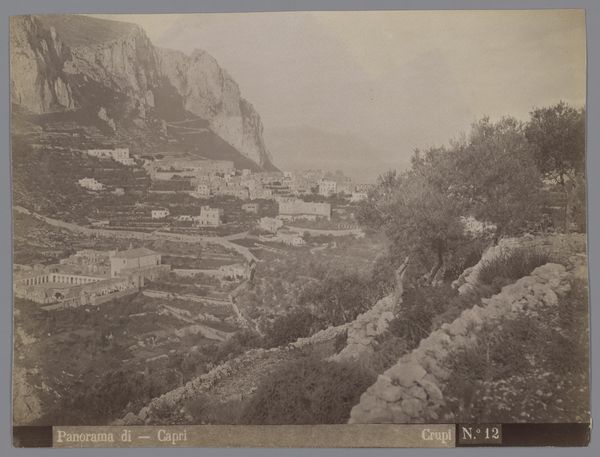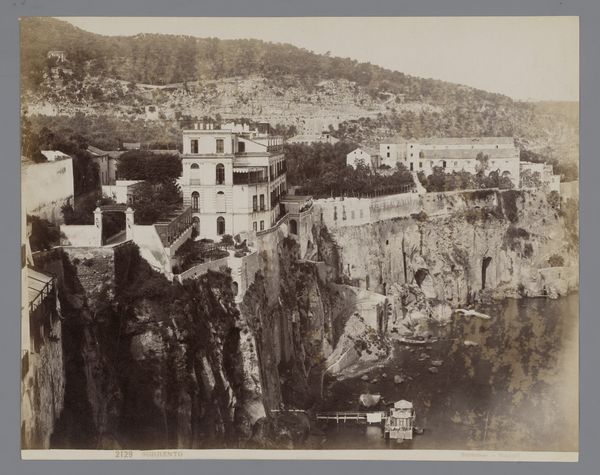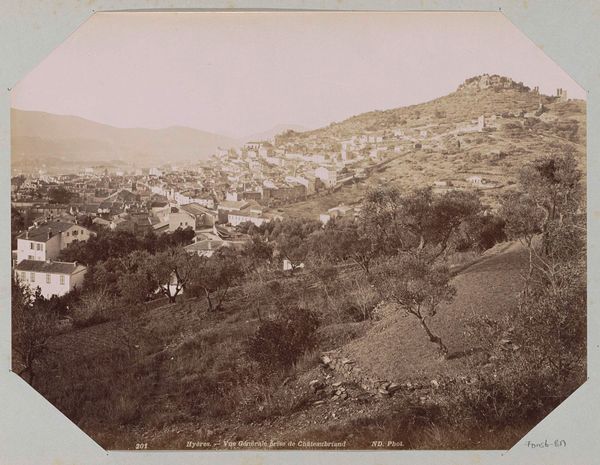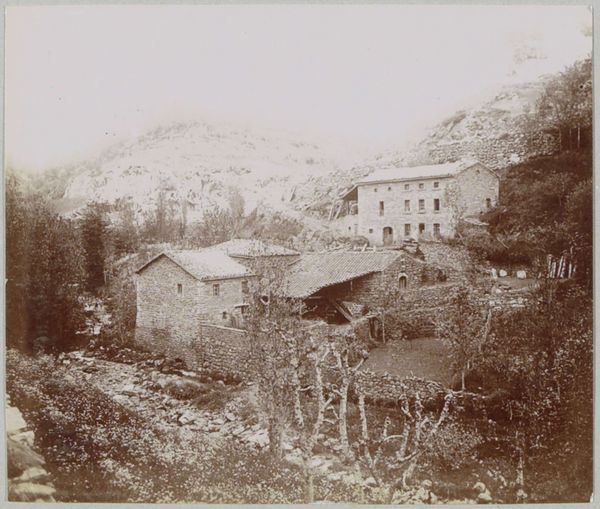
photography, albumen-print
#
pictorialism
#
landscape
#
photography
#
cityscape
#
albumen-print
Dimensions: height 69 mm, width 82 mm
Copyright: Rijks Museum: Open Domain
Editor: Right, next up we have 'View of the Mountain Village Touët-de-Beuil', a photograph from 1903 by Delizy. It’s an albumen print and, well, it gives me a bit of an eerie feeling. The sepia tones and the almost precarious way the village clings to the mountain… it’s beautiful but unsettling. What jumps out at you when you see this? Curator: What I see is a carefully constructed image playing into contemporary notions of the picturesque, even while representing a very real place. The soft focus, the almost painterly quality afforded by the albumen print, were hallmarks of Pictorialism. But consider the context: photography was still vying for acceptance as 'art'. How does documenting a rural village, seemingly untouched by modernity, reinforce certain power dynamics and social narratives at the time? Editor: So, it’s less a straightforward record and more a constructed view of reality? Curator: Precisely. The photographer chooses the angle, the light, the moment. What are they trying to say about this place, about the relationship between 'civilization' and 'nature', and what biases might they unknowingly – or knowingly – be perpetuating? Also consider the role the Rijksmuseum plays today. What narrative does its acquisition and display reinforce about Dutch identity and history? Editor: That’s a really interesting point about framing. It really challenges how we passively accept these images, and pushes us to consider whose stories get told and how museums contribute. I’ll definitely keep that in mind going forward. Curator: It works on so many levels, and it really pays to start unpacking these choices. I find that fascinating, what about you?
Comments
No comments
Be the first to comment and join the conversation on the ultimate creative platform.

